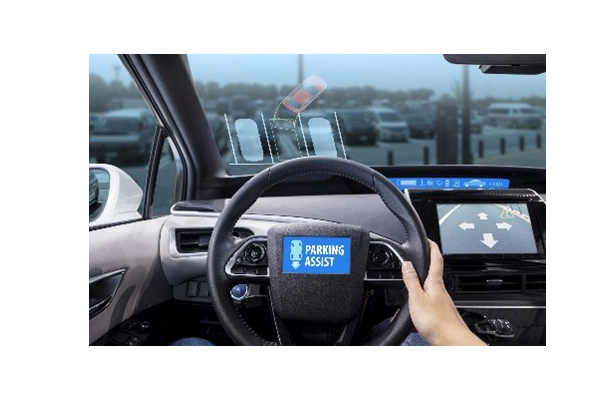
Fleet operators and consumers are investing a lot of dollars in ADAS. To reap the safety rewards of these investments, everyone needs objective intel on how well their particular systems perform, their shortcomings and finally, be well trained on how to properly use these systems.
By Art Liggio, Chairman, Driving Dynamics
May 22, 2022
 Numerous reports and warnings regarding the efficacy of Automated Driver Assistance Systems (ADAS) to keep drivers safe have been published over the past few years by leading road safety groups such as U.S.-based AAA Traffic Safety Foundation and Thatcham Research in Europe. Unfortunately, the cautionary messages, pointing out the shortcomings and failure points, of ADAS seem to have been overshadowed by the persuasive and persistent marketing campaigns suggesting that operating a vehicle can be more effortless than ever and will require little to no driver interaction. For example, a recent television commercial showed the driver and passengers playing a game, with everyone clapping hands while executing a pass of another vehicle. Seriously, is this how any driver should be encouraged to operate a vehicle?
Numerous reports and warnings regarding the efficacy of Automated Driver Assistance Systems (ADAS) to keep drivers safe have been published over the past few years by leading road safety groups such as U.S.-based AAA Traffic Safety Foundation and Thatcham Research in Europe. Unfortunately, the cautionary messages, pointing out the shortcomings and failure points, of ADAS seem to have been overshadowed by the persuasive and persistent marketing campaigns suggesting that operating a vehicle can be more effortless than ever and will require little to no driver interaction. For example, a recent television commercial showed the driver and passengers playing a game, with everyone clapping hands while executing a pass of another vehicle. Seriously, is this how any driver should be encouraged to operate a vehicle?
U.S. traffic deaths in the first six months of 2021 hit 20,160. This is an 18% increase over the first half of 2020 and the highest first-half total since 2006. The trend is rapidly moving into very negative territory. Can ADAS be an important tool in slowing down these losses? Definitely, yes, but first a couple of things need to happen.
To begin with, drivers must receive realistic and objective information regarding the limitations and potential failure points of ADAS. The messaging about the efficacy of ADAS or lack thereof needs to break through the marketing hype and be heard loud and clear. There appears to be some good news in this regard.
As a means to encourage the acceptance and adoption of automated vehicles and their safety potential, for some time now the National Highway Traffic Safety Administration’s (NHTSA) has stated that “94% of serious crashes are due to human error.” This could be the case but by implying that technology can eliminate driver deficiencies, particularly where ADAS is involved, does not reflect what we are currently experiencing. Perhaps this mindset is changing and a serious approach on the use of today’s ADAS features will be realistically measured and communicated.
Jennifer Homendy, the chair of the National Transportation Safety Board, has recently gone on record challenging the 94% statistic as misleading and that the Department of Transportation (DOT) should cease using it. According to the report her comments are based on, using the 94% figure is an excuse for the spike in roadway collisions and continued use of the figure, particularly by NHTSA, distracts from a comprehensive approach that is now needed. While Homendy is “cautiously optimistic” that DOT is taking the necessary steps to boost safety, she is concerned about the government’s ability to keep pace in making the best use of rapidly changing safety technology.
Her comments are on this topic, along with the deteriorating crash statistics, are getting the attention of safety professionals as they rethink the recent over reliance on today’s technology to solve their problems. This paradigm shift is even taking place at research organizations, such as Consumers Report and the Insurance Institute for Highway Safety (IIHS) which plan to measure and report on how well individual ADAS features function by make and model. For instance, IIHS announced it is developing a new rating program that evaluates the safeguards that vehicles with partial automation employ to help drivers stay focused on the road. This will aid fleet managers and consumers in making more intelligent decisions around vehicle purchases and increase awareness about how ADAS technologies actually perform.
The other requirement for ADAS to become an important tool in slowing down the increasing crash rate, is to properly educate drivers on the correct use of its features. Don’t expect drivers to recognize which ADAS features are equipped in their vehicles. In many cases, research has shown that drivers often assume their vehicles have more features than installed. There are even more unrealistic assumptions on how these features perform. And, when ADAS features do activate, there are many cases in which drivers try to override the system since they have no idea that ADAS has been activated. In these situations, both the driver and the system collectively fail.
David Harkey, IIHS president said, “Partial automation systems may make long drives seem like less of a burden, but there is no evidence that they make driving safer,” “In fact, the opposite may be the case if systems lack adequate safeguards.” Fleet operators and consumers are investing a lot of dollars in ADAS. To reap the safety rewards of these investments, everyone needs objective intel on how well their particular systems perform, their shortcomings and finally, be well trained on how to properly use these systems.


